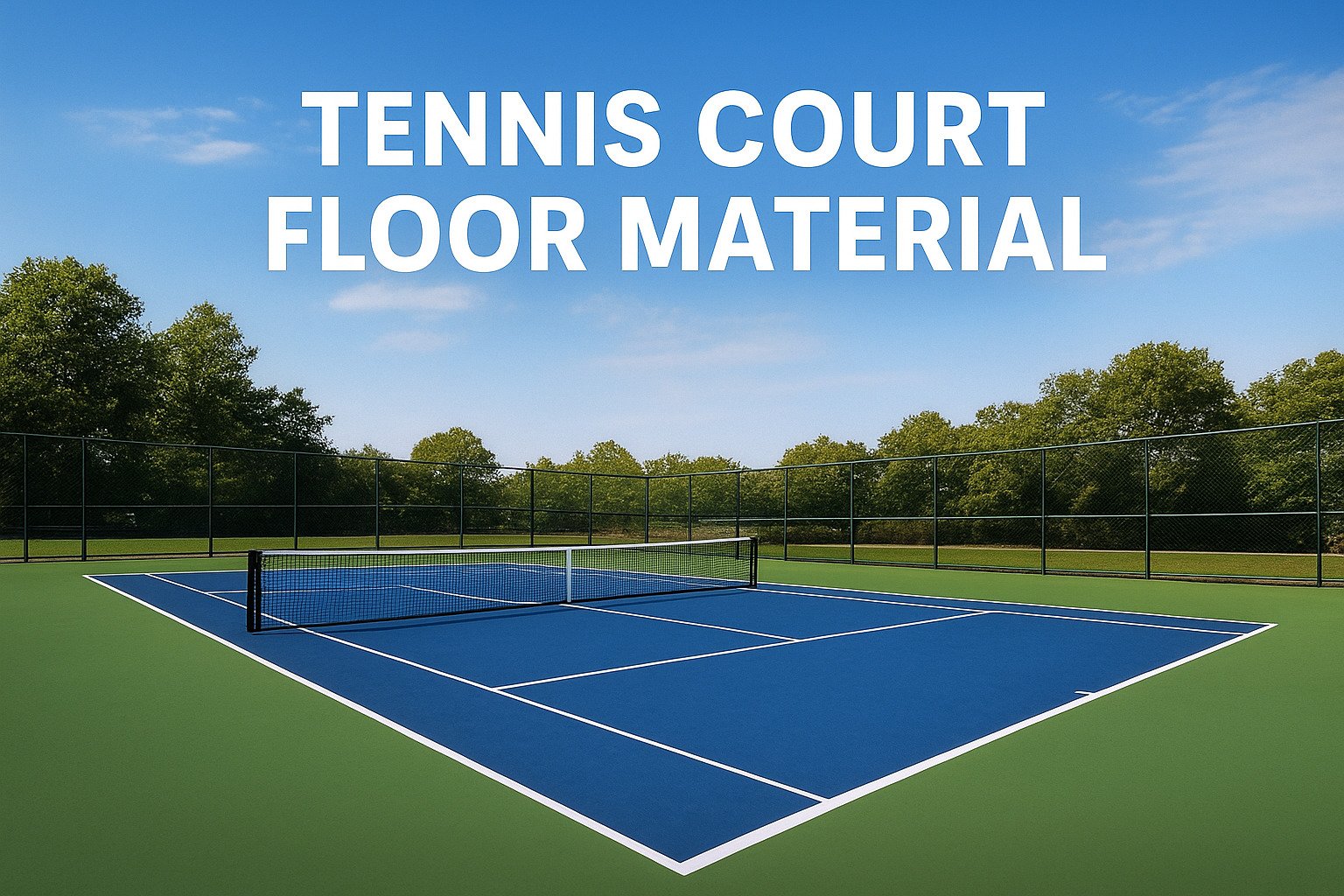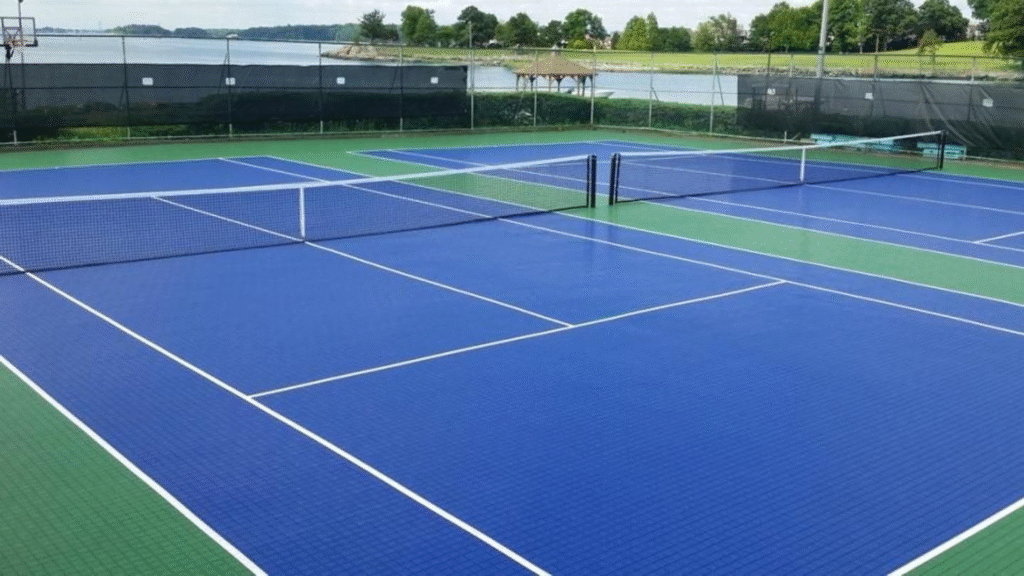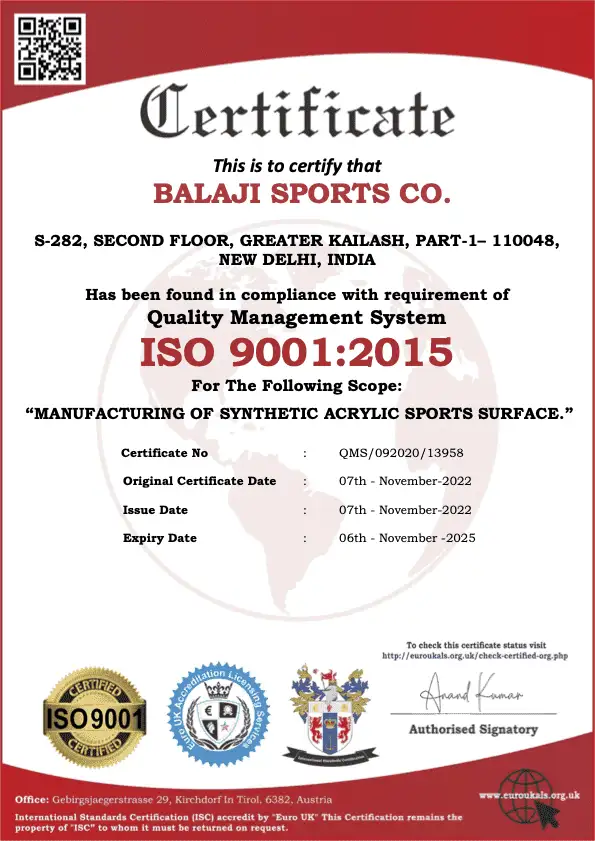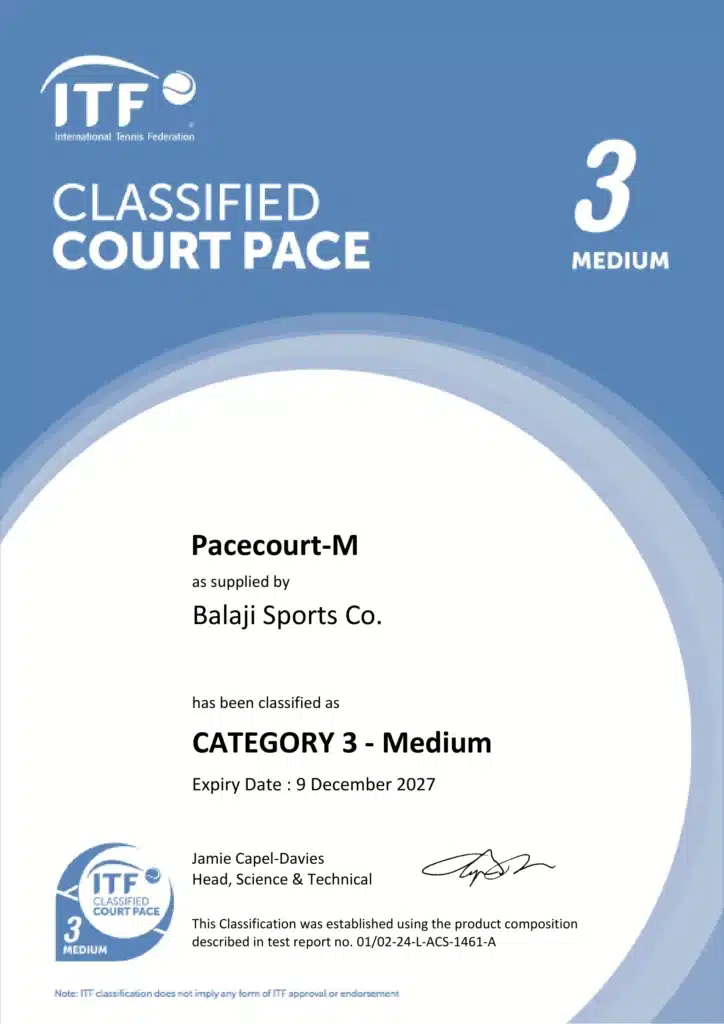
Choosing the right tennis court floor material is one of the most important decisions when building or renovating a tennis court. The flooring type directly affects player performance, ball bounce, speed of the game, injury prevention, court durability, and maintenance cost.
This in-depth guide covers everything you need to know about tennis court flooring materials, including types, construction details, pros & cons, cost comparison, and how to choose the best material based on your climate, budget, and usage.
What Is Tennis Court Flooring?
Tennis court flooring refers to the surface material used to build the playing area of a tennis court. It includes layers of base preparation, cushioning, acrylic coatings, turf systems, rubber layers, clay mixtures, or synthetic materials that determine:
- Ball bounce height
- Court speed (fast, medium, slow)
- Player traction
- Shock absorption
- Weather resistance
- Maintenance needs
Types of Tennis Court Floor Materials

Below are the 5 most widely used tennis court flooring materials worldwide, along with their properties and ideal use cases.
1. Acrylic Hard Court Flooring (Most Popular Worldwide)
Overview
Acrylic hard courts are the most commonly used surfaces in schools, academies, clubs, and tournaments. These courts have a concrete or asphalt base topped with multiple layers of acrylic coatings.
Features
- Medium to fast speed
- Consistent ball bounce
- UV-resistant
- Slip-resistant surface
- Customizable colors
Pros
- Long lifespan (10–12 years)
- Low maintenance
- Affordable for large-scale projects
- Suitable for indoor & outdoor courts
Cons
- Hard surface → higher impact on knees
- Requires a strong base (asphalt/concrete)
Best For
Schools, academies, tennis clubs, government sports facilities.
2. Synthetic Turf (Artificial Grass) Tennis Court Flooring
Overview
Synthetic turf consists of artificial grass filled with sand or rubber infill. It offers a softer playing experience similar to natural grass courts.
Features
- Medium to fast play
- Softer on joints
- Cooler surface in summers
- Natural-feel movement and sliding
Pros
- Very low maintenance
- Great aesthetics
- Safe & beginner-friendly
- Weather-friendly surface
Cons
- Not suitable for professional tournaments
- Infill compaction requires periodic brushing
Best For
Recreational courts, residential villas, sports clubs, hotels & resorts.
3. Clay Court Flooring (Red or Green Clay)
Overview
Clay courts are made with crushed shale, brick, or stone. These are widely used in Europe & South America, famously used at the French Open.
Features
- Slow court speed
- High ball bounce
- Encourages longer rallies
- Excellent for improving player stamina
Pros
- Great for training groundstrokes
- Player-friendly surface
- Good for warm climates
Best For
Professional training academies and clubs focusing on endurance training.
4. PU (Polyurethane) Tennis Court Flooring
Overview
PU flooring is a cushioned athletic surface installed over concrete. It provides a balance of comfort and performance, ideal for multi-sport areas.
Features
- Elastic cushion layer
- Shock-absorbent
- Durable & seamless surface
- Indoor & outdoor suitability
Pros
- Great for player comfort
- Weather-resistant
- Long-lasting
Cons
- Higher installation cost
- Requires expert installation
Best For
Multipurpose courts, indoor stadiums, premium sports facilities.
5. EPDM Rubber Flooring
Overview
EPDM is a rubber-based surface available in tiles or poured-in-place systems. It provides high cushioning and slip-resistance.
Features
- Excellent shock absorption
- Non-slip surface
- Weather & UV resistant
- Vibrant colors available
Pros
- Safe for children & senior players
- Low maintenance
- Very durable
Cons
- Not suitable for professional-level tennis matches
- Slower court speed
Cons
- Not suitable for professional-level tennis matches
- Slower court speed
Comparison Table: Best Tennis Court Flooring Materials
| Flooring Material | Court Speed | Durability | Maintenance | Cost | Best For |
|---|---|---|---|---|---|
| Acrylic Hard Court | Medium–Fast | High | Low | Medium | Schools, Clubs |
| Synthetic Turf | Fast | Medium | Low | Medium | Resorts, Home Courts |
| Clay Court | Slow | Medium | High | Medium | Training Academies |
| PU Flooring | Medium | High | Low | High | Indoor Courts |
| EPDM Rubber | Slow | High | Low | High | Recreational & Safe Sports Areas |
Factors to Consider When Choosing Tennis Court Flooring
1. Climate & Weather Conditions
- Hot regions → Acrylic, Turf, EPDM
- Humid regions → Acrylic, PU
- Rainy regions → Avoid clay (not water-friendly)
2. Usage Purpose
- Training → Clay or Acrylic
- Professional matches → Acrylic
- Recreational → Turf or EPDM
- Multipurpose → PU or EPDM
3. Budget
- Economical → Acrylic
- Mid-range → Synthetic Turf
- Premium → PU or EPDM
4. Maintenance Expectations
- Low maintenance → Acrylic, Turf, EPDM
- High maintenance → Clay
Average Cost of Tennis Court Flooring (2025 Estimates)
| Flooring Type | Cost Range (Per sq. ft.) |
|---|---|
| Acrylic Hard Court | ₹80 – ₹200 |
| Synthetic Turf | ₹150 – ₹350 |
| Clay Court | ₹120 – ₹250 |
| PU Flooring | ₹250 – ₹450 |
| EPDM Flooring | ₹300 – ₹500 |
Costs may vary depending on location, thickness, brand, base preparation, and labor.
Which Tennis Court Floor Material Is Best? (Summary)

If you want the best all-rounder surface, go for Acrylic Hard Court.
If you want premium comfort, choose PU Flooring.
If you want low maintenance & aesthetics, synthetic turf is ideal.
For professional training, nothing beats clay for endurance and technique building.
Conclusion
Selecting the right tennis court floor material is essential for ensuring long-term durability, player performance, and overall value. Whether you are constructing a new court or renovating an old one, understanding the pros, cons, and features of each flooring type will help you make an informed decision.



